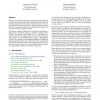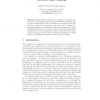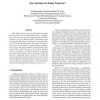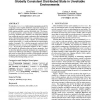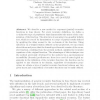172 search results - page 12 / 35 » Structure and Properties of Traces for Functional Programs |
ICFP
2010
ACM
13 years 8 months ago
2010
ACM
We show how the binary encoding and decoding of typed data and typed programs can be understood, programmed, and verified with the help of question-answer games. The encoding of a...
IFL
2005
Springer
14 years 1 months ago
2005
Springer
Abstract Starting with an evaluator for a language, an abstract machine for the same language can be mechanically derived using successive program transformations. This has relevan...
FTCS
1998
13 years 8 months ago
1998
Most fault-tolerant systems are designed to stop faulty programs before they write permanent data or communicate with other processes. This property (halt-on-failure) forms the co...
POPL
2005
ACM
14 years 7 months ago
2005
ACM
We introduce transactors, a fault-tolerant programming model for composing loosely-coupled distributed components running in an unreliable environment such as the internet into sy...
TLCA
2007
Springer
14 years 1 months ago
2007
Springer
We describe a new method to represent (partial) recursive functions in type theory. For every recursive definition, we define a co-inductive type of prophecies that characterises...
